The Premier State of NSW continues to plan, approve, build and commission one energy consuming structure after the other: skyscrapers in the Sydney and Parramatta CBDs, apartment towers plus associated metro tunnels with deep underground stations, road tunnels with 24h lighting and a 2nd airport with an aerotropolis. Our politicians like to portray themselves as construction managers. But where are the energy consumption calculations for the operation of these structures?

Fig 1: NSW Premier Perrottet inspecting new metro tunnel in May 2022
https://www.domperrottet.com.au/news/metro-track-nearly-finished-australia-biggest-public-transport-project/
To be worthwhile, the new AU$ 18.5 bn metro line in the picture requires many new power hungry skyscrapers in the city and 100s of new apartment towers in many suburbs, mainly filled by immigrants. But all this is far beyond the energy means of NSW which is utterly dependent on power imports from 2 neighbouring states, Queensland and Victoria.
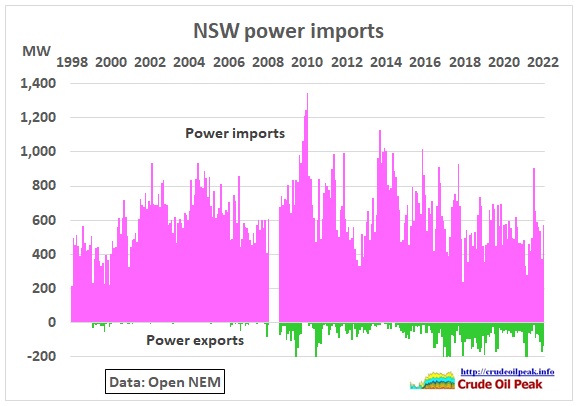 Fig 2: NSW power imports are a permanent problem
Fig 2: NSW power imports are a permanent problem
Last week, on an otherwise uneventful Saturday during a mild summer with a NSW peak demand of just around 11 GW, there were suddenly (modest) price spikes in both NSW and Queensland.
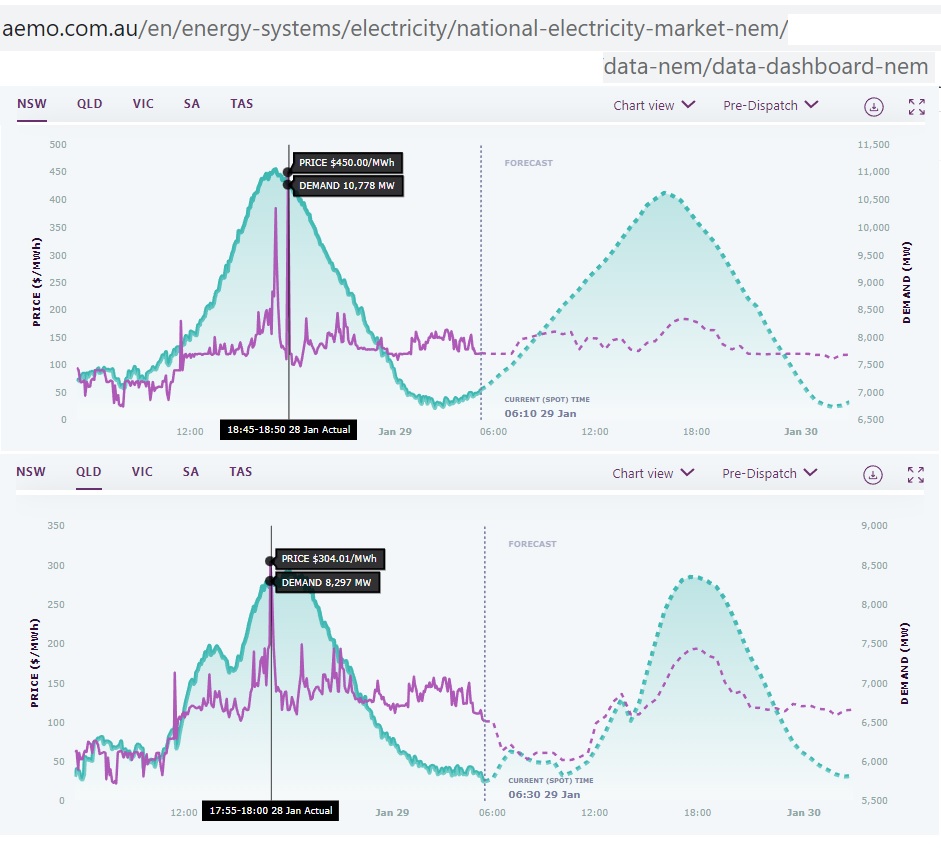 Fig 3: Price spikes more than 3x (NSW) and 2x (Qld) the daily average
Fig 3: Price spikes more than 3x (NSW) and 2x (Qld) the daily average
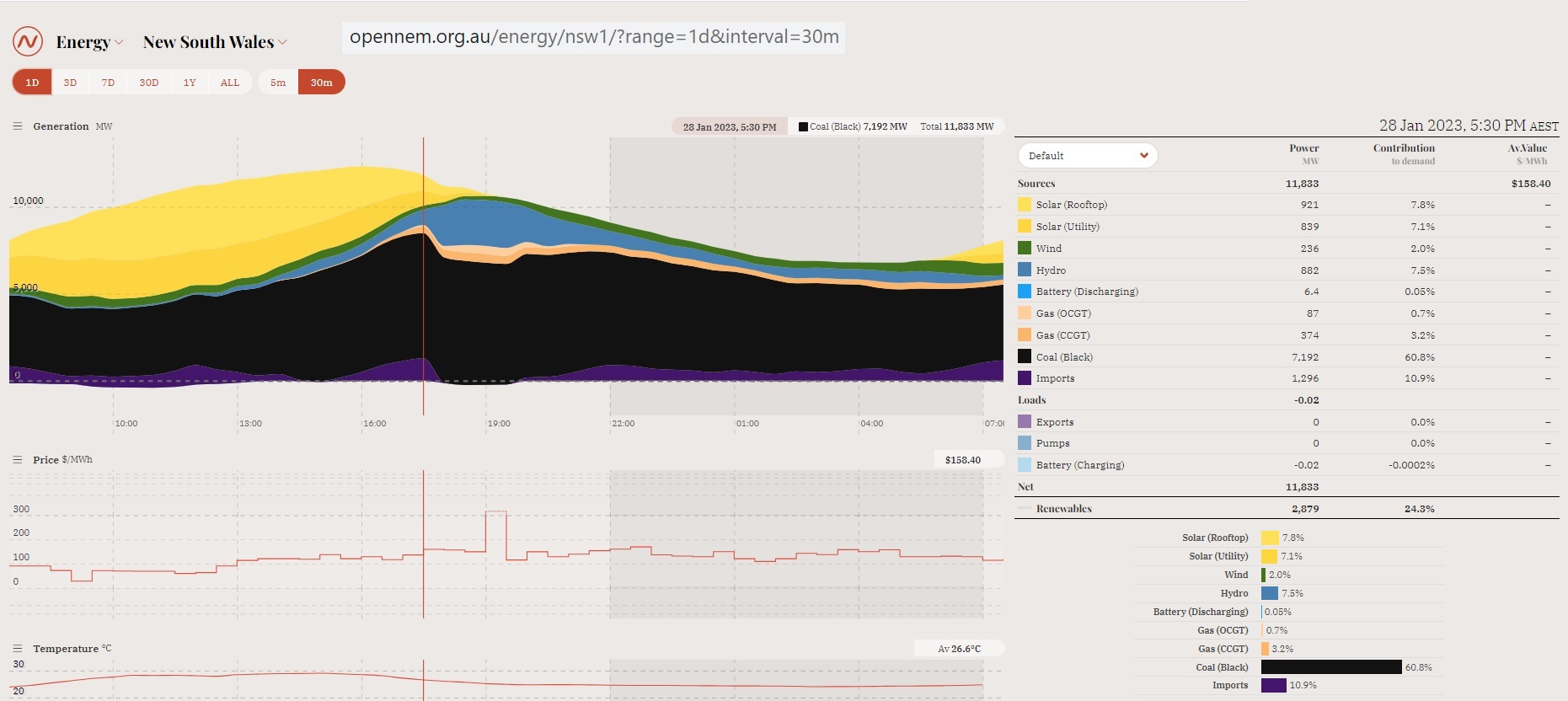 Fig 4: An unfortunate colouring in the NEM graph does not easily show what caused a drop
Fig 4: An unfortunate colouring in the NEM graph does not easily show what caused a drop
Was something wrong with those at times unreliable, aging coal fired power plants? Vales Point (now owned by a Czech brown coal baron – outside the control of the government!) went down by 200 MW but Bayswater compensated for this. No generation problem at the level of around 7 GW. It was not the coal plants.
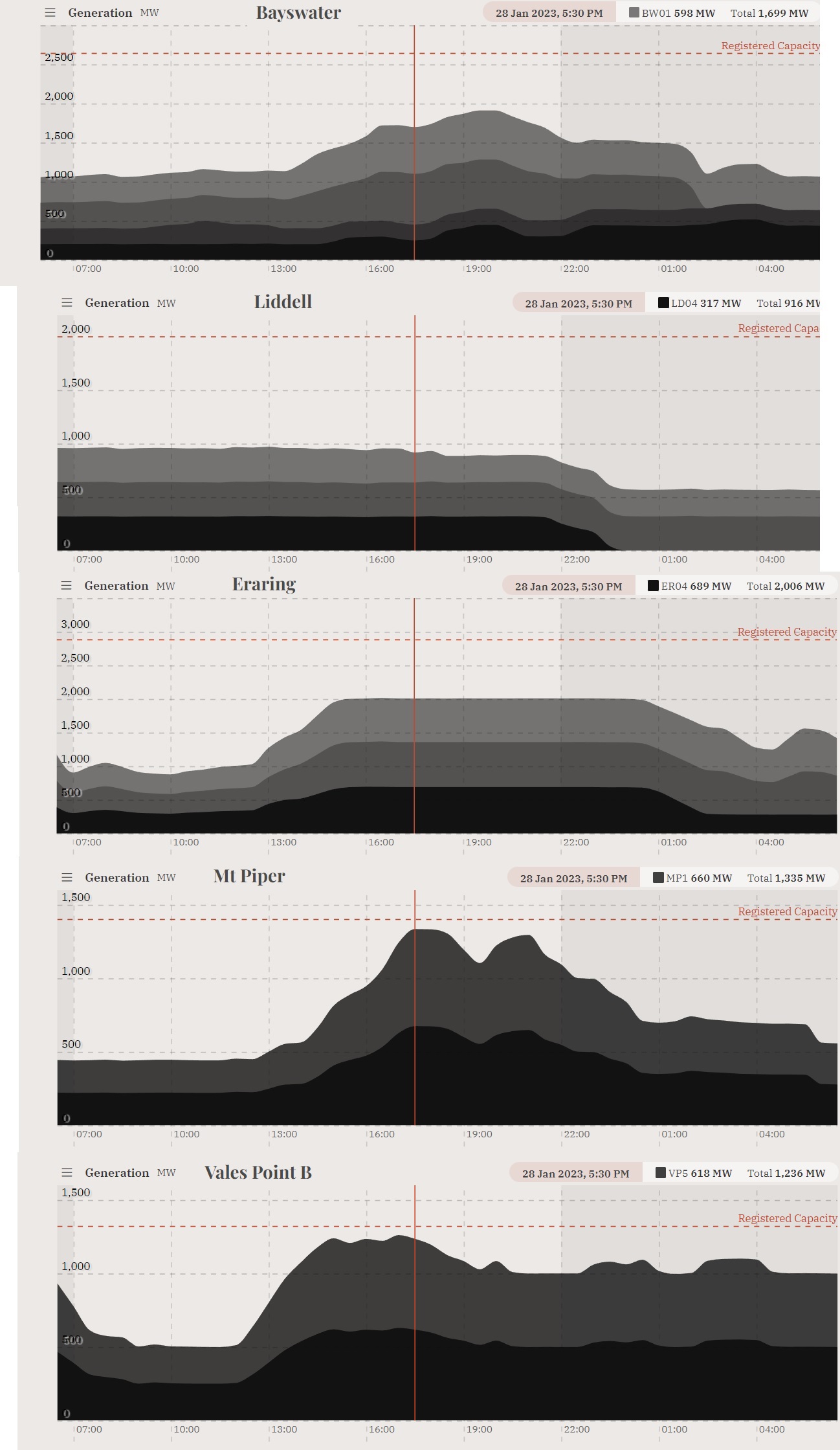 Fig 5: Generation of 5 NSW coal fired plants on 28/29 Jan 2023
Fig 5: Generation of 5 NSW coal fired plants on 28/29 Jan 2023
Note that Liddell unit 4 went off-line. Are they practicing the shutdown announced for 28 April 2023? https://www.portnews.com.au/story/8057685/agl-names-the-date-when-it-will-pull-the-plug-on-liddell/
It was actually the NSW power imports from Queensland which dropped to zero from around 1,300 MW.
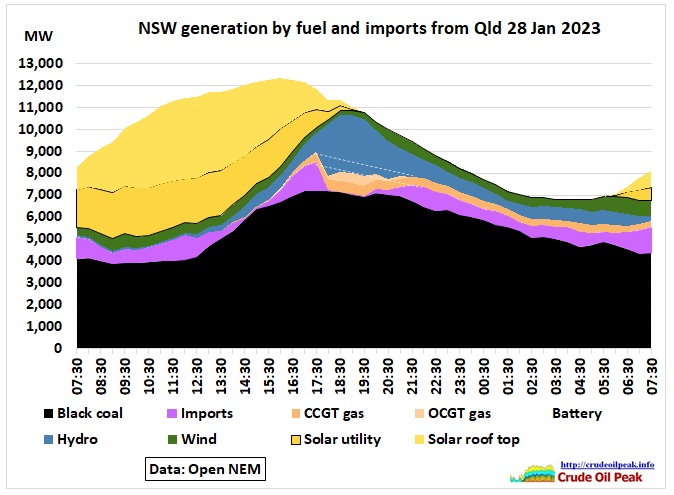 Fig 6: Re-stacked NSW power generation and imports (violet) from Qld
Fig 6: Re-stacked NSW power generation and imports (violet) from Qld
Missing imports were 3,600 MWh over 4 hrs with a max. of appr. 1,200 MW.
The lacking imports were replaced by hydro power and gas peaking plants. Tumut (max 616 MW) had already ramped up to 546 MW before 17:30 and Shoalhaven had only 30 MW left of its registered capacity of 240 MW. But Tumut 3 was available (1,700 MW):
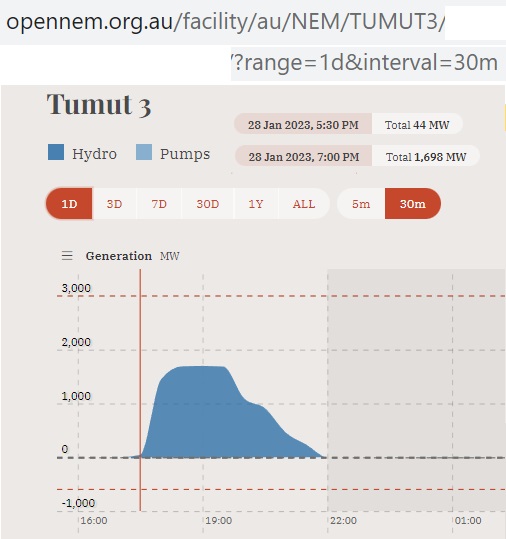 Fig 7: Tumut 3 generation ramped up as imports dropped to zero
Fig 7: Tumut 3 generation ramped up as imports dropped to zero
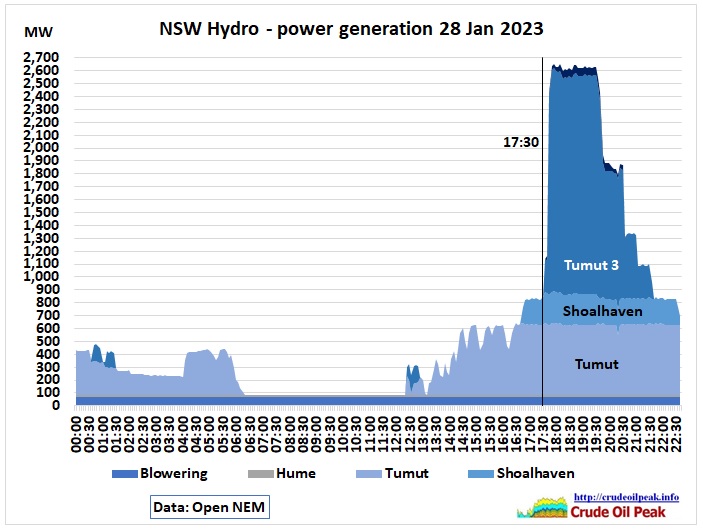 Fig 8: NSW hydro power on 28 Jan 2023
Fig 8: NSW hydro power on 28 Jan 2023
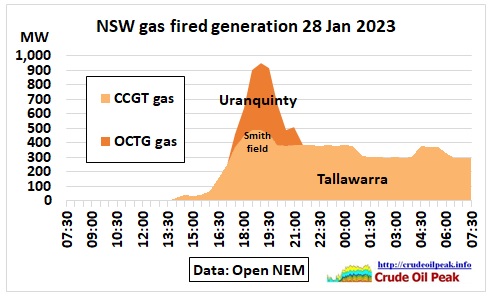 Fig 9: NSW gas fired generation 28/29 Jan 2023
Fig 9: NSW gas fired generation 28/29 Jan 2023
This reminds us again of the importance of sufficient gas flows for the peaking plants.
So what happened in Queensland? No dramatic event on that day. Just available coal and gas plants reaching limits and a less sunny day.
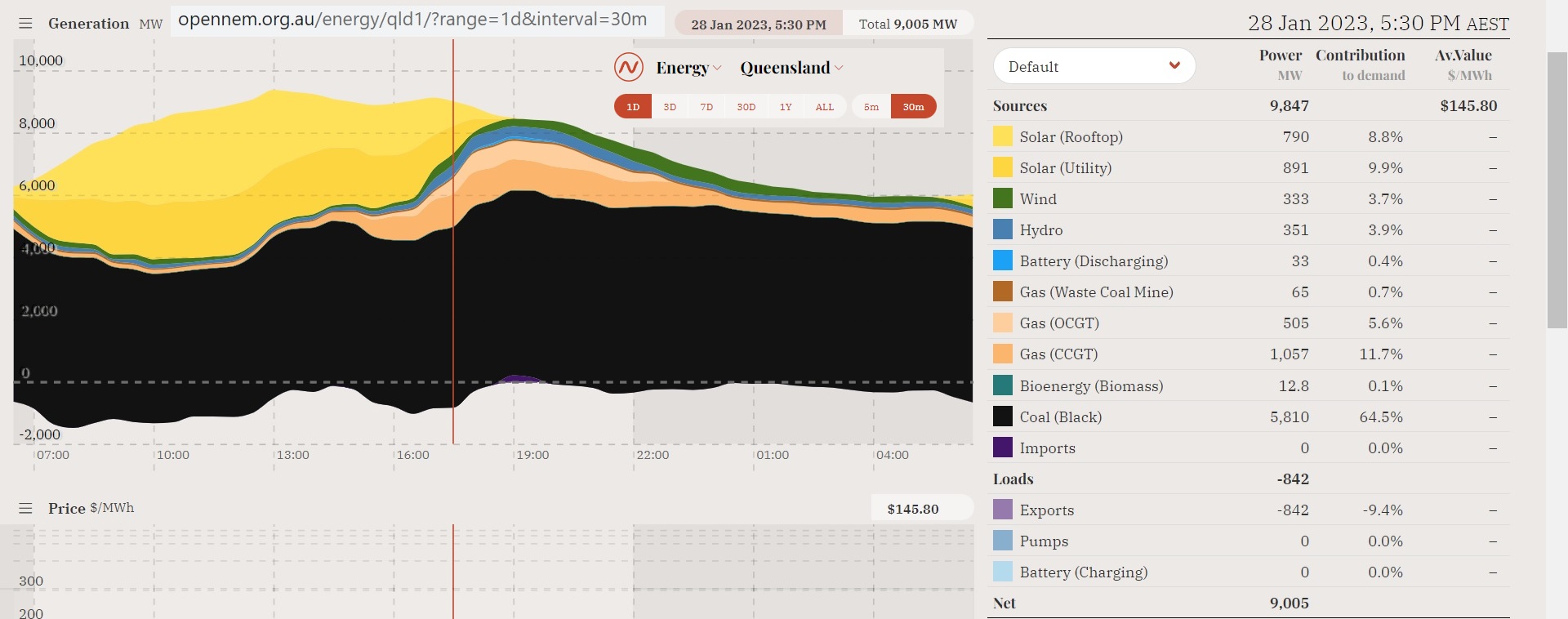 Fig 10: Queensland power generation 28/29 Jan 2023
Fig 10: Queensland power generation 28/29 Jan 2023
Since the May 2021 hydrogen explosion at Callide C4 there are problems.
Callide has 4 units with following registered capacities (B1 350 MW, B2 350 MW, C3 420 MW, C4 420 MW)
Callide Power Station in central Queensland completely offline
4 Nov 2022
https://www.abc.net.au/news/2022-11-04/callide-power-station-offline-equipment-failures/101615842
Callide B2 was off line since 13 Jan 2023. On 28 Jan, only Callide B1 was running at 270 MW.
All other coal plants were near capacity or recently achieved maxima at 17:30
| Plant name | Generation in MW
28 Jan 17:30 |
Capacity
MW |
| Callide B2 | 260 | 350 |
| Gladstone units 2-6 | 1,206 | 1,400 |
| Kogan Creek | 712 | 744 |
| Millmerran | 796 | 852 |
| Stanwell | 1,081 | 1,460 |
| Tarong | 1,335 | 1,400 |
| Tarong North | 421 | 443 |
| Sum | =5,811 (87%) | 6,649 |
. Fig 11: Queensland coal fired power generation 28 Jan 2023
Fig 11: Queensland coal fired power generation 28 Jan 2023
Similarly, Queensland’s gas powered plants in use were at 17:30 running with 93% of the maximum of 1,850 MW achieved during that peak period (measured in 5 min intervals). In turn, that maximum was 83 % of the registered capacity. So there was not much in reserve.
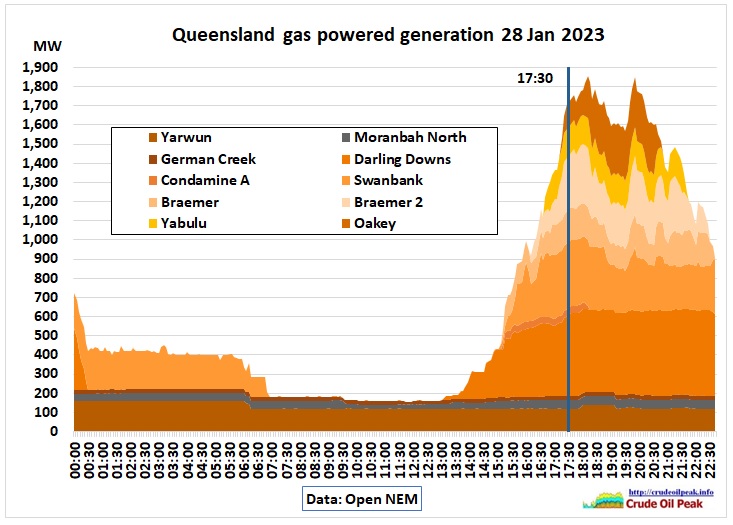 Fig 11: Queensland gas fired power generation 28 Jan 2023 (5 min intervals)
Fig 11: Queensland gas fired power generation 28 Jan 2023 (5 min intervals)
Among these gas powered plants, 4 units were not in use which could have theoretically delivered another 770 MW. From the NEM data publicly available we do not know whether these units were under maintenance, had no gas or were not started because it was uneconomic.
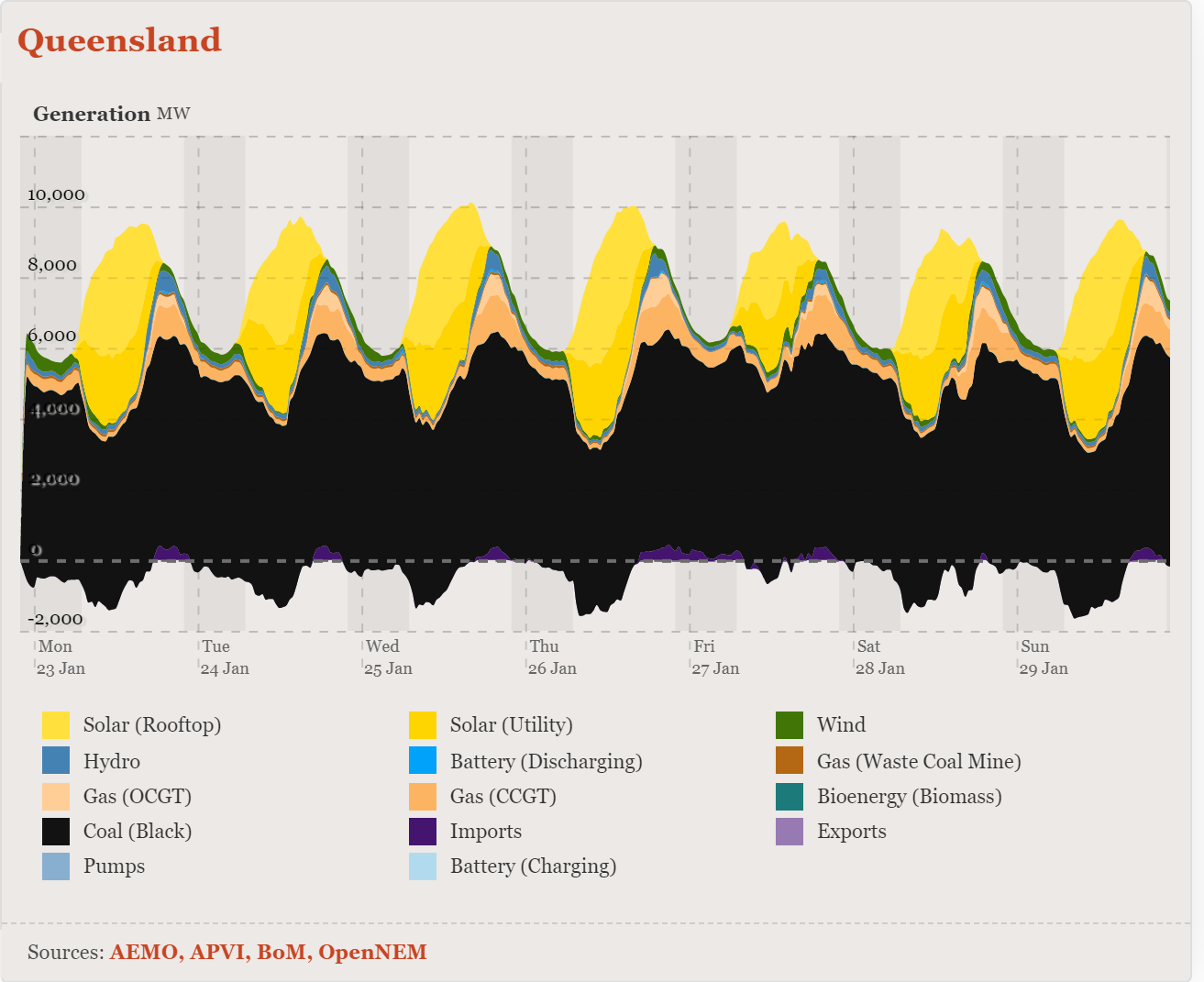 Fig 12 Queensland power generation by fuel in week #4. Not much wind and hydro power
Fig 12 Queensland power generation by fuel in week #4. Not much wind and hydro power
We see clearly that Queensland is exporting its solar power to NSW (the black areas below the horizontal axis covering up the exports)
It will be very interesting indeed to see what will happen when Liddell (appr. 1,000 MW) shuts down end of April. The AGL battery stage 1 (250 MW for 2 hrs) isn’t sufficient and not ready anyway. The Kurri Kurri gas plant (660 MW) is supposed to start only end 2023. Snowy 2 pumped hydro is delayed until end 2026.
In the coming months, solar power is seasonally reduced as we approach the critical month of May.
In Sep 2019 I asked then Treasurer Perrottet in a public meeting at the RSL in Epping where the power will come from for all the apartment towers being planned.
 Fig 13: Premier Perrottet at a RSL forum in Epping 25 Sep 2019
Fig 13: Premier Perrottet at a RSL forum in Epping 25 Sep 2019
https://www.facebook.com/photo/?fbid=2827040803972666&set=pcb.2827041070639306
He answered that he will talk to Matt Canavan (friend of coal power) and that he will push through the Narrabri coal seam gas project. When I insisted to know how many MW that would be I was called an alarmist. A year later:
11/12/2020
NSW power supply problems November 2020 (part 2)
https://crudeoilpeak.info/nsw-power-supply-problems-november-2020-part-2
26/11/2020
NSW power supply problems November 2020 (part 1)
https://crudeoilpeak.info/nsw-power-supply-problems-november-2020
Another half year later:
Liddell outages caused load shedding at the Tomago alu smelter (actually a no-no) in May 2021.
7/6/2021
NSW power spot price spikes May 2021 become regular (part 1)
https://crudeoilpeak.info/nsw-power-spot-price-spikes-may-2021-become-regular-part-1
Then the Callide accident:
14/6/2021
NSW power spot price spikes May 2021 become regular (part 2)
https://crudeoilpeak.info/nsw-power-spot-price-spikes-may-2021-become-regular-part-2
Given what happened in the last 3 years my question was more than justified.
Conclusion
NSW should not assume that it can always import power from neighbouring states.
It is high time the NSW government calculates the future power consumption and peak loads of all important projects, including estimating the energy impact of the NSW share of the federal immigration targets, conveniently acquiesced, expected or even wished for. Hopefully the government will finally realize that all its ideas are unrealistic. For many projects under construction it is already too late.
.